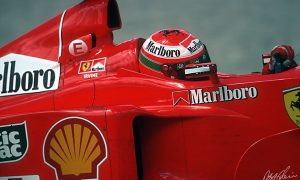
©XPB Images
HAVING A GLOBAL VISION
In order to continue being a David-like thorn in the side of the F1 Goliaths, Green has to plan his team’s future needs well upstream, sometimes even years in advance. Once all the Force India shareholders have been convinced with the soundness of the investment, he still has to find a viable financial solution. That’s where the title ‘director’ takes its full meaning, despite the term being often overshadowed by the flashier ‘technical’ adjective.
“I work with the senior management to understand what they want, what their expectations are and how we can deliver that, because you have to think a long way ahead. There is a lot of day-to-day stuff that goes on, but we need to have a global vision for the company. When you change the vision, it takes quite a long time to change direction.
“That’s what we did when we decided to use the Toyota windtunnel in Cologne. I said to the shareholders: ‘This is our performance level at the moment. We have plateaued. If we want to take the next step, then this is what holds us back.’ I explained this to them several years ago, and we looked at different options how we could improve from an aerodynamic perspective.
“When you change the vision, it takes quite a long time to change direction. That’s what we did when we decided to use the Toyota windtunnel in Cologne. I said to the shareholders: ‘This is our performance level at the moment. We have plateaued. If we want to take the next step, then this is what holds us back’.”
“We started to use the Toyota tunnel for correlation, to make sure our tunnel in Brackley was telling us the truth. But then, very soon after, we realised that even though it was telling us the truth it couldn’t deliver what we needed from a correlation point of view: it couldn’t mimic what happens on the track because of its size [50% scale compared to the 60% Toyota facility].
“So we knew we needed to go to a bigger tunnel. So I said: ‘This is the cost, and this is where I think our performance will be if we do this.’ The senior management agreed, and I think the VJM08-B, our first car designed in the tunnel, showed that it was good value for money.”
Practically, Force India dispatches two teams of aerodynamicists to Cologne for a pair of weeks each month: “We go for two weeks for testing: we send one team for the first week, they come back again; and then another team go out for the second week. So when we are not testing, everybody is back to the factory.”
Force India’s aero department includes around 100 people (in a 370-strong workforce), split into three groups that correspond to the three main areas of the car: front end, middle part, and rear end. That’s the type of organisation one will encounter in most teams. In each group, there is a team leader, a pair of senior and junior aerodynamicists, computational fluid dynamics (CFD) experts, specialists in surface engineering, etc.

©XPB Images & Toyota






